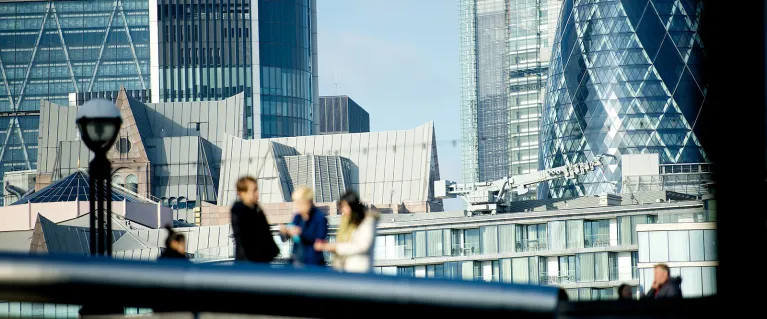
Related work
The London Infrastructure Plan 2050 complements and works alongside other areas of work at City Hall.
Regeneration
Market research on attitudes to growth
We’re working with the Mayor’s Design Advisory Group to conduct market research into public attitudes to growth. We’re running surveys and workshops to understand people’s positive and negative perceptions of growth, so that we’re able to encourage better urban design.
Early survey findings have shown that people generally agree that new development is important for London, but feel that it needs to be done carefully. What matters most to people is transport infrastructure, well-designed buildings and a mix of homes.
There are concerns, however, that new development won’t be attractive or in keeping with the surrounding environment, and that it will struggle to provide public services. The biggest concerns people have is public transport, followed by housing affordability and health services. Most people surveyed think that brownfield sites are the best location for new development, instead of town centres and the greenbelt.
MDAG has been developing the Good Growth Agenda. A series of four reports, the agenda sets out far-reaching recommendations and guidance for City Hall, industry professionals and the Mayor, on how London can deliver a high-quality and socially inclusive environment through ‘good growth’.
Housing
The Mayor’s Housing Strategy aims to put in place the resources to deliver more than 42,000 new homes a year. This will require the full commitment of the London boroughs, of government, and of private and public sector developers. Working together is crucial for this, it is the only way we can:
- agree a long-term financial settlement with national government
- free up local councils to build
- promote institutional investment in new housing
- bring forward surplus public land
- develop Housing Zones across the capital to drive delivery
The Mayor’s Housing Zones prospectus, published in 2014, invited bids to a £400m programme to fund targeted investment in 20 areas to accelerate housing delivery. The response was extremely positive, with 25 borough-led bids received from across London.
31 Housing Zones have now been announced by the Mayor across the two rounds of the Housing Zone programme. More information on the first 31 Housing Zones can be found in the London Housing Zones document which was published in March 2016.
Smart London
We are working closely with infrastructure providers to investigate the potential for innovation in infrastructure delivery.
Using the expertise of the Smart London Board and the Smart London Innovation Network, we will inform technology specialists and innovators of the challenges faced by infrastructure providers. We’ll then pilot the best ideas.
City/Capital Initiative with Greenwood Strategic Advisors
We are looking to collaborate with Greenwood Strategic Advisors and other cities as part of the City/Capital Initiative to understand the different dimensions of London in a computerised simulation model.
If successful, the model could provide an analytical framework to understand what changes would be needed to bring London on the path to sustainability (in all its aspects, economic as well as environmental). There is keen interest in this initiative in Boston, Massachusetts and other potential partner cities.
Greenwood are experts in systemic sustainability and in the application of city-simulation technology.
Purpose of the simulator
The purpose of the prototype simulator is exploratory analysis, to find combinations of investments and governmental policies that will:
- establish London on a path towards sharply enhanced sustainability on multiple dimensions (as listed above)
- show positive returns (after financing costs) that will enable institutional investors to provide a substantially increased volume of investment financing
Setting up
The first step in this partnership is the setup and application of a prototype simulator covering the various elements that compose a city’s sustainability profile, and how these elements connect to and influence each other. The elements are:
- population
- Jobs
- Commuting
- infrastructure and development projects (of various types)
- space usage
- energy consumption
- emissions
- education
- public safety
- economic performance
- fiscal balance
- debt
- life quality
What next
The Greater London Simulator Prototype is currently being set up and will be followed by several months of collaborative analytical use.
It is expected to lead to a much more detailed and definitive simulator and detailed design, testing, and monitoring of new funding structures, investment projects, and policy changes aimed at improving multi-dimensional sustainability in Greater London.
Crucially, such simulators differ from other models in their high anticipatory reliability across a wide range of scenarios, based on rigorous testing and refinement against historical city data.
This model could enable London to make a more compelling case to political stakeholders regarding investment and complementary policies, and to better engage the public in the decision making process.
This initiative depends on timely availability of knowledge and data from the GLA and other sources. Greenwood are providing their technology and expertise at no charge to the GLA.
Need a document on this page in an accessible format?
If you use assistive technology (such as a screen reader) and need a version of a PDF or other document on this page in a more accessible format, please get in touch via our online form and tell us which format you need.
It will also help us if you tell us which assistive technology you use. We’ll consider your request and get back to you in 5 working days.